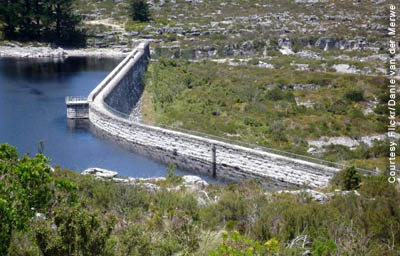After a series of heavy rains in the Western Cape region over the past few days, the Western Cape Water Supply System (WCWSS) has once again exceeded its 100% dam water levels, reaching an impressive 109.38%. This development brings much-needed relief to a region that has faced water scarcity challenges in recent years.
The Western Cape Water Supply System
The Western Cape Water Supply System consists of several dams, including Theewaterskloof, Berg River, Upper and Lower Steenbras, Voëlvlei, and Wemmershoek. These reservoirs collectively serve as the primary source of water for the City of Cape Town and its surrounding areas.
Significant Improvement Over Last Year
According to the National Department of Water and Sanitation (DWS), this year’s water levels within the system have shown a remarkable improvement, especially when compared to the same period last year. In 2022, the dam levels were at a mere 85% during this time.
The DWS reported that the dams in the Cape Town system have seen an increase of more than 7% in water levels compared to the previous week, indicating a rapid recovery.
The Remarkable Theewaterskloof Dam
Among the Western Cape dams, Theewaterskloof Dam stands out as the largest and most significant, accounting for 54% of the province’s water supply. Presently, Theewaterskloof Dam is at full capacity and is even spilling excess water, a sight that brings much-needed relief to the region.
Implications and Future Considerations
While this surplus of water is undoubtedly positive news for the Western Cape, it also raises questions about the region’s ability to manage water resources effectively. How can the province ensure sustainable water management and prevent wastage, especially during periods of plenty?
Additionally, the celebration of the 126th anniversary of Woodhead Dam highlights the rich history and vital role that these reservoirs have played in the development of the Western Cape. It prompts us to reflect on the need for ongoing maintenance and investment in water infrastructure to safeguard the region’s water supply for future generations.
In conclusion, the Western Cape’s dams surpassing 100% capacity is a cause for optimism, signaling improved water security for the region. However, responsible water management remains crucial, and this milestone should serve as a reminder of the need for long-term planning and investment in water infrastructure to ensure a sustainable future for South Africa’s Western Cape.














